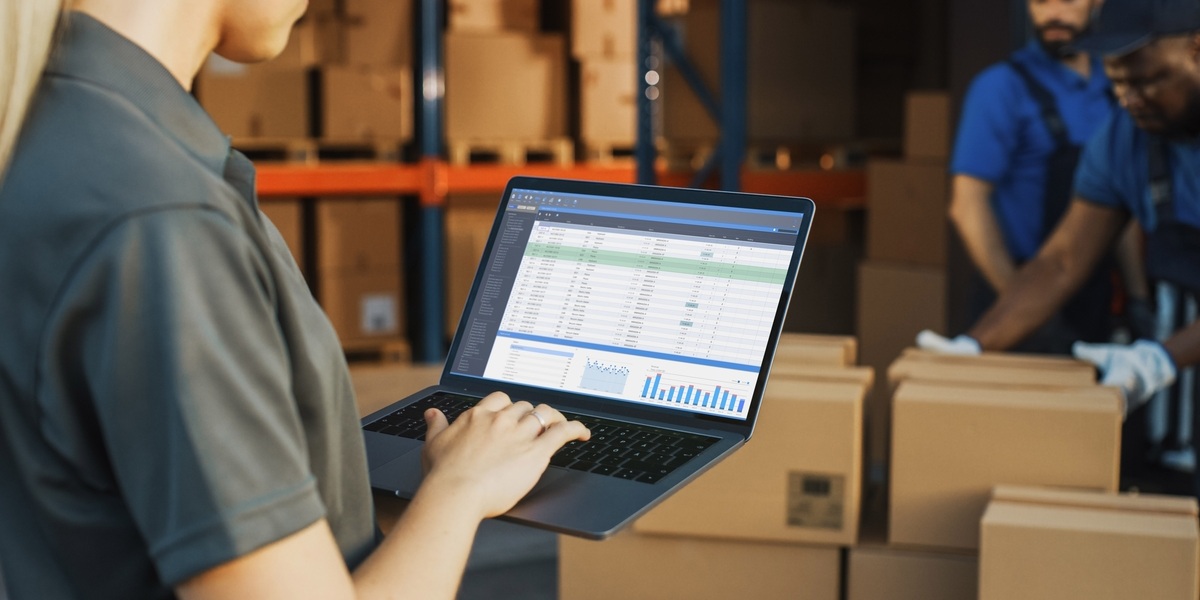Your team is swamped. Orders are late. Shipping costs seem to increase every month. Sound familiar?
If you’re managing an e-commerce business that’s growing fast, these aren’t just problems. They’re red flags. At first, handling logistics internally works. You’re small, nimble, and can iron out delays on the fly. But sometimes success grows faster than your systems. That’s when you need to spot the signs and decide: do you keep struggling, or do you outsource logistics to grow smarter?
Companies that recognize the moment to shift to a 3PL or logistics BPO grow faster, save more money, and provide better customer experiences. In this guide, we’ll walk you through the five clear signs it’s time to make that leap. You’ll get practical advice, real-world examples, clear definitions, and a checklist to help decide what’s right for your business.
Table of Contents
What Does It Mean to Outsource Logistics?
Let’s clear up some terms first:
- A 3PL (third-party logistics provider) typically handles physical tasks like storage, packing, and shipping.
- A logistics BPO goes one step further by offering value-added services like helpdesk support, inventory management, reporting and analytics.
- Transportation outsourcing refers to hiring carriers or route management systems to take over the shipping leg.
Some people worry outsourcing means they lose control. That is simply not true. Modern 3PLs use shared dashboards, performance metrics, and live tracking, so you can see exactly what’s going on. You decide the rules, KPIs, and workflows, while your partner takes care of getting it all done.
Here’s a big stat: 92% of Fortune 500 companies outsource logistics in some way. So if you’re growing and still doing everything in-house, you’re probably overthinking it. That’s why knowing when to make the switch is just as important as knowing how to do it.
So, how do you know if you’ve hit that point? If any of the following five scenarios sound familiar, it might be time to stop patching things up in-house and start thinking about partnering with a logistics pro.
Let’s break them down.
Sign #1: Operational Bottlenecks Are Hurting Customer Experience
Are orders shipping later than expected? Do you see more complaints about wrong items or late delivery? A consistent flow of negative reviews or abandoned carts could be the logistics telling you it’s time for a change.
3PLs bring structure. They operate multiple fulfillment centers, offer real-time tracking, and push for SLA-based accuracy. Some logistics BPOs go beyond shipping—they add customer support, helping track orders, resolve issues, and communicate with customers.
Take our ecommerce client as an example. A global brand looked to scale across 13 European markets but quickly became overwhelmed by support tickets and fulfillment bottlenecks. We launched a multilingual customer support team in four weeks covering 13 languages and integrating seamlessly into their existing CRM and performance dashboards.
The result? First-response times dropped from three minutes to just 35 seconds, resolution times improved from eight hours to three, SLA compliance rose from 82% to 96.6%, and CSAT scores jumped 14.6%, even during peak sale periods.
Want to see the full breakdown? Check out our case study here.
Sign #2: Logistics Costs Are Scaling Faster Than Revenue
Here’s where logistics costs tend to spiral out of control:
- More staff to fulfill orders
- Bigger warehouse space (leased or paid off)
- Waste from unused packaging or returns
- Premium fees on urgent shipping
- Extra systems and software fees
These things eat your margin. On the other hand, 3PLs spread costs across many clients. They negotiate bulk shipping rates and split warehouse rent across users. Some even reduce packaging waste through smarter design and automation.
In one case, a mid-sized online retailer cut shipping costs by around 30% within three months of moving operations to a 3PL. At the same time, they dropped their average delivery time from five days to three, even during seasonal surges.
The message: when shipping eats profit faster than your growth gives it back, it might be time to partner up.
Sign #3: You’re Expanding into New Markets
Selling in more countries? Dealing with customs, local carriers, taxes and language issues? That road is complex and frustrating.
The global cross-border e-commerce market has exploded. It’s on track to reach $3.3 trillion by 2028. In Europe alone, cross-border sales grew by 32% recently. 3PLs and BPOs operating internationally already have local infrastructure. That means:
- Regional warehouses ready to stock your product
- Pre‑integrated carrier partnerships
- Customs assistance and VAT compliance
- Multilingual customer support
Sign #4: Your Team Is Overwhelmed and Distracted
When your team splits their time between product development, marketing, customer support, and fulfillment, something suffers. Burnout increases, mistakes increase, you can feel it.
By outsourcing logistics, you free your internal team’s headspace to focus on core growth areas. Plus, a logistics BPO can handle everything back-end: tech setup, reporting, integrations with your store and CRM, and even data analytics.
Some partners measure hours saved. One brand reported saving 140 hours per month just by transferring their returns processing to an outsourced team. That’s time they redirected to development, marketing and new product launches.
Stop spreading your people too thin. Smart outsourcing clears the deck so your team can win the races that matter.
Sign #5: You Lack the Tech to Compete
Your competitors may be using advanced Warehouse Management Systems (WMS), Transportation Management Systems (TMS), predictive stocking, and real-time tracking. If you don’t have tech like that internally, you’re swimming against the current.
The good news is, many 3PLs come with best-in-class systems built-in. They connect via API. You get live inventory updates, shipping notifications, back‑end data visualizations—all ready to plug in.
Instead of building expensive platforms from scratch, you leverage tech your partner already built. They keep it updated, and you get data that helps you plan smarter while reinvesting in growth.
When Not to Outsource Logistics
Outsourcing logistics offers powerful advantages, but it’s not a one-size-fits-all solution. For some businesses, sticking with in-house operations—at least for the time being—can be more practical, cost-effective, or aligned with brand values.
Here’s when it might make more sense to keep things internal:
1. You’re a niche brand focused on highly customized packaging or premium unboxing experiences If your products require hand-packed presentation, handwritten notes, branded tissue paper, or luxury wrapping, outsourcing can be tricky. While some 3PLs do offer custom packaging services, they often come at a premium and may not match the care and brand personality your in-house team provides. For high-end DTC brands that thrive on crafting a unique customer experience, control is everything.
2. Your product catalog is small and order volume is low If you’re selling fewer than 1,000 orders per month, especially across a tight SKU range, the math may not justify outsourcing yet. You can likely fulfill orders from a small warehouse or even a home-based setup without incurring massive overhead. In these cases, the cost of outsourcing may exceed the time and money it would save. Once volume picks up and you start to experience delays or inefficiencies, that’s when outsourcing should move higher on your radar.
3. Your products are heavily regulated Certain industries, like pharmaceuticals, luxury goods, perishable items, or alcohol, require a high degree of regulatory oversight, temperature control, or even licensing. In some cases, outsourcing logistics adds layers of complexity and compliance risk. Unless the 3PL or BPO specializes in your niche and can show proof of certification, it’s safer to retain full control of storage, handling, and shipping internally.
How to Get Started with Logistics Outsourcing
So, you’re seriously considering outsourcing your logistics.
Great, now comes the important part: doing it right. Logistics isn’t something you want to hand off blindly. It touches every part of your customer experience. But when done strategically, outsourcing can be one of the best decisions you’ll ever make for your business.
Here’s a step-by-step guide to help you get started:
1. Audit your current logistics setup Before making any decisions, take a deep dive into how your logistics process works today. How many hours per week are spent on order fulfillment? What are your total shipping costs? How many returns are you processing? Get clarity on costs, bottlenecks, time spent, and customer pain points. You can’t fix what you haven’t measured.
2. Identify your biggest pain points What’s breaking down? Is it shipping speed? Is it warehouse space? Is your team spending too much time packing boxes instead of building campaigns or launching new products? List the top 3–5 challenges you’re facing with logistics, so you know what you need help with.
3. Start small with a pilot program You don’t have to outsource everything overnight. Start with one product line or region. Test a 3PL or BPO partner using a small batch of orders or SKUs. This lets you evaluate their performance, tech compatibility, customer experience, and communication without overcommitting.
4. Define and track your KPIs Set clear benchmarks like order accuracy, fulfillment speed, return rates, customer satisfaction, and cost per shipment. The more specific your goals are, the easier it will be to judge if the partnership is working.
5. Review and iterate After 30 to 90 days, take stock. What’s improved? Are customers happier? Are your internal teams spending more time on strategy and less on order processing? If the pilot is successful, scale up. If not, tweak the process or explore other partners.
6. Collaborate closely with your logistics partner Outsourcing doesn’t mean disappearing. The best relationships are built on regular communication, shared dashboards, and mutual transparency. You should feel like your partner is part of your team, not a distant service provider.
Bonus tip: Consider working with a logistics BPO instead of just a 3PL if you also need support with customer communication, inventory forecasting, system integration, or returns processing. A good BPO will act as a full extension of your business, not just a pack-and-ship service.
Conclusion
Outsourcing logistics unlocks efficiency, cost savings, and peace of mind, but timing matters. Do it too early, and you pay too much; too late, and you let customers slip away.
If you recognize several of the five warning signs, it’s time to explore a support model that scales with you.
Thinking about outsourcing logistics?
Book a short call to see how a flexible BPO setup could work for you.
FAQ Section
Q1: What does it mean to outsource logistics? Outsourcing logistics means handing over part (or all) of your supply chain operations to a specialized third-party provider. That can include warehousing, inventory management, shipping, returns handling, or even customer support related to orders. These companies, often called 3PLs (third-party logistics providers) or logistics BPOs, take care of the logistics grind so your team can focus on product, growth, and customer experience. You’re not giving up control—you’re handing off the heavy lifting to experts.
Q2: What are the benefits of outsourcing logistics? There are quite a few, especially if your business is scaling. You’ll reduce overhead costs (no need to lease warehouses or hire big fulfillment teams), improve delivery times, and gain access to advanced tech like real-time tracking and smarter inventory management. Good 3PLs also give you flexibility to scale up or down as needed. Bonus: your team spends less time putting out fires and more time building your business.
Q3: How do I know if my company is ready for a 3PL partner? A few signs: orders are getting delayed, your customer support is drowning in “Where’s my order?” tickets, shipping costs are eating into your margins, or you’re expanding into new markets and can’t keep up with fulfillment. If any of these sound familiar, or if your team is stretched thin just trying to keep logistics running, then yes, it’s time to seriously look into partnering with a 3PL.
Q4: Is logistics outsourcing only for large companies? Not at all. In fact, many small and mid-sized ecommerce brands are the ones who benefit the most. Today’s 3PL and logistics BPO models are designed to be flexible. You don’t need a massive warehouse budget to make outsourcing work. In many cases, it’s the fastest and most affordable way for growing brands to compete with the big players.
Q5: What’s the difference between 3PL, 4PL, and logistics BPO?
- A 3PL handles core logistics like warehousing, order fulfillment, and shipping.
- A 4PL acts more like a logistics architect. They don’t just move boxes; they manage the entire supply chain and often coordinate multiple 3PLs for you.
- A logistics BPO (Business Process Outsourcing) goes a step further, handling things like order-related customer support, returns processing, back-office operations, and tech integrations.
Think of it this way: 3PLs move your products. 4PLs manage the ecosystem. Logistics BPOs help you run the entire customer-facing side of fulfillment.



